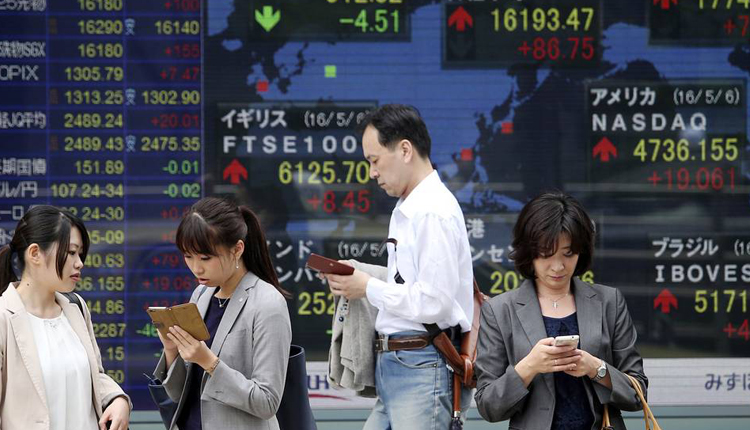Asian stocks traded mixed on Tuesday as investor sentiment turned cautious over rising energy prices and heightened geopolitical tensions.
In Japan, the benchmark Nikkei 225 erased earlier losses to trade near flat while the Topix index added 0.29 percent. South Korea’s Kospi index traded near flat.
On Monday, U.S. President Donald Trump said the United States had reached initial trade agreements with Japan on tariffs and digital trade that will not require congressional approval.
Australia’s S&P/ASX 200 also reversed earlier declines to trade higher by 0.33% as most sectors recovered. The energy subindex added 0.93 percent as oil names in the country gained.
Chinese mainland markets fell more than 1 percent in the afternoon: The Shanghai composite was down 1.35 percent, the Shenzhen composite declined 1.94 percent and the Shenzhen component fell 1.89 percent.
Reports said new home prices in China grew at their weakest pace in nearly a year in August as a slowing economy and existing curbs on speculative buying put a dent on overall demand.
In Hong Kong, the Hang Seng index dropped 1.52 percent.
Oil remains in focus after prices surged in the previous session. West Texas Intermediate futures gained more than 14 percent, notching its biggest one-day gain since 2008. International benchmark Brent also jumped more than 14 percent for the session.
Energy prices pulled back slightly on Tuesday during Asian hours: U.S. crude prices were down about 0.9 percent to $62.34 per barrel while Brent slipped 0.22 percent to $69.02.
The sharp moves came after a series of drone attacks hit the world’s largest oil processing facility in Saudi Arabia over the weekend, which halted the production of 5.7 million barrels of crude a day. That ’s more than half of Saudi Arabia’s global daily exports and more than 5 percent of the world’s daily crude oil production.
Saturday’s attack was claimed by Yemen’s Houthi rebels and the Trump administration has blamed Iran. A Saudi-led military coalition said Monday the attack was carried out by Iranian weapons and did not originate from Yemen.
The Kingdom’s national oil company, Saudi Aramco, reportedly aimed to restore about a third of its crude output, or 2 million barrel by Monday. But media reports suggest it could take weeks before Aramco restores the majority of its output at the affected production site.
Saudi Arabia’s “spare capacity and existing stockpiles (~26 days of export) should mitigate some of the lost output,” Vivek Dhar, director of mining and energy commodities research at the Commonwealth Bank of Australia, said in a morning note.
Oil prices came off their session highs after Trump said he was authorizing the release of oil from the Strategic Petroleum Reserve to keep markets “well-supplied.” Analysts have said that energy prices could climb further if there is a military response from the Saudis, the U.S. or others.
“The surge in oil prices also reflects an increase in geopolitical premium,” Rodrigo Catril, a senior foreign exchange strategist at the National Australia Bank, wrote in a morning note. He said the weekend’s incident showed Saudi Arabia’s vulnerability to more attacks while at the same time, there’s heightened risk as both the Kingdom and the U.S. point fingers at Iran.
“For now is probably safe to say that there is a lot that we don’t know and as such oil prices are likely to remain elevated and volatile,” Catril said, adding that “higher oil prices will have implications to the global growth outlook which was already facing a challenging environment.”
In the currency market, the U.S. dollar index, which measures the greenback against a basket of its peers, last traded at 98.599, retreating from an earlier high of 98.680.
The U.S. Federal Open Market Committee is set to meet on Tuesday and Wednesday and markets expect the central bank to cut interest rates by a quarter point. Global growth outlook remains subdued amid the ongoing trade war between the United States and China.
Elsewhere, the Japanese yen traded at 108.17 against the dollar, weakening from an earlier level around 108.01. The Australian dollar changed hands at $0.6835, down from levels near $0.6870.
Source: CNBC



